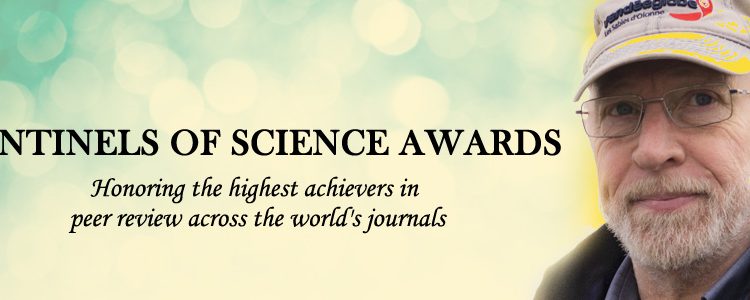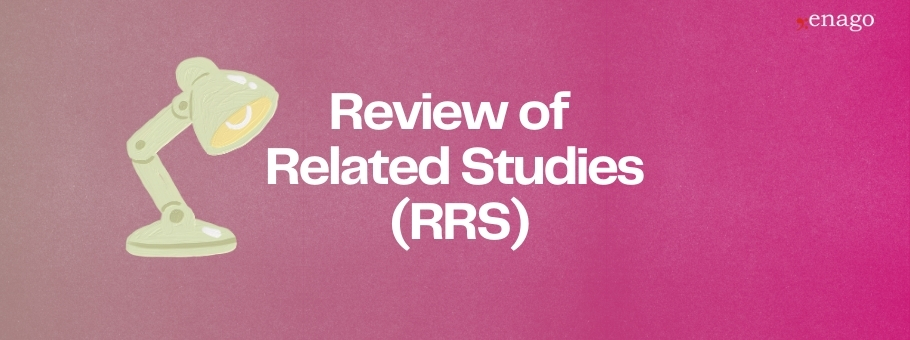Insights into Peer Reviewing and Its Challenges: An Interview With Dr. Jonas Ranstam

In the last decade, ensuring appropriate assessment of valid data has become increasingly important for journals. Many journal editors lack appropriate statistical knowledge, although statistics has become critical to the field of medicine and biology. Thus, for professionally evaluating both research design and statistical methodology many journals take the assistance of competent scientists who act as statistical reviewers or statistical referees.
As part of our interview series on Connecting Scholarly Publishing Experts and Researchers, we had the opportunity to speak with Dr. Jonas Ranstam over e-mail. Dr. Jonas Ranstam is a medical statistician and an independent statistical consultant. He is affiliated with the Lund University, Sweden, and is currently a statistical advisor at Mdas AB, Sweden. Apart from this, Dr. Jonas also maintains his blog Statistical Mistakes that focuses on systemic reviews of statistical mistakes in medical research and presents references to literature that describes how such mistakes can be avoided.
In this interview, we discuss with Dr. Jonas about his experience of being a peer reviewer and his opinion on the newer models of peer review. Given his experience in the industry, he also shares some thoughts on open access publishing and working with manuscripts of ESL authors.
EA: Congratulations on being awarded the 2016 Sentinels of Science Awards. How does it feel to be recognized as the top contributing researcher to peer review?
Jonas: It feels very well, thank you. It is always nice to be encouraged.
EA: Apart from the Sentinels of Science Awards, you are also described as the World’s Most Prolific Reviewer in Slate, STAT, The Scientist, and Scholastica. Do you think that there is enough being done to give peer reviewers the recognition they deserve?
Jonas: I believe that reviewing is rewarding in itself. It is an honor to be asked to review a scientific manuscript, and it indicates that you are recognized as an international expert. Reviewing also gives you an insight into current research and its problems and methodological advancements.
EA: Considering the various types of data and the sheer volume of it, what type of difficulties do reviewers face when they analyze the quality of it?
Jonas: One common problem faced by reviewers is that the source of data is unclear and the data is also presented poorly. For example, uncertainty measures are often confused with dispersion measures. Standard deviations can be confused with standard errors, and the analysis unit is not always defined. A typical error made by authors is presenting data as bar charts, which neither describes the number of observations, nor their distribution. Dot plots and box plots are better alternatives. If I had the chance I would have banned the use of bar charts.
EA: In the last decade, new types of peer review models like collaborative and post-publication peer review are being increasingly considered by researchers. How do you expect the peer review landscape to evolve in the next five years?
Jonas: I believe that openness and transparency will increase and this is important because it is a way to reduce the risk of reviewing scams, fake reviewing, and predatory journals, which are problems that are being frequently encountered.
EA: Should peer reviewers receive any training to improve the understanding of the overall process? What are the challenges you foresee for implementing a system like this?
Jonas: I am in favor of seeing peer review as a natural part of the PhD education and post-doc activities. I also think that it is important for peer review to be naturally integrated with other aspects of scientific work. Engaging in science should naturally include reviewing.
EA: Are there any specific challenges that you face when it comes to reviewing manuscripts written by ESL authors?
Jonas: No, not with regard to the language in the manuscripts, perhaps because editors are selective with regard to the manuscripts they send for review. Review response letters are more often difficult to understand. I am an ESL author myself, and I believe that many of my colleagues probably get linguistic assistance with their manuscripts but not with their correspondence to the editorial office.
EA: Open access journals are often reported to have low-quality peer review processes. What in your opinion can be done to improve the current system?
Jonas: This may be true for some journals, but not for all. I review both for open access journals and for others, and I do not do it differently for open access journals. However, I think there is probably a relation between review quality and impact factor. Journals with higher impact factors tend to have better review processes.
EA: What are the common ethical concerns you face? How do you cope with submissions from ESL countries like China?
Jonas: I am not sure that I always know from which country a manuscript’s authors come because some journals remove the title page when sending a manuscript for review. The nationality of the authors, is in my opinion, irrelevant. The same research rules (e.g. the Helsinki Declaration, ICH-GCP, and the WHO requirements) apply to all authors, wherever they come from.
EA: Peer review is a critical process as the reviewers’ opinion leads to rejections. Are there any specific trends that researchers should be aware of?
Jonas: This probably depends on the particular research field you are engaged in, but I am not aware of such trends in medical research, possibly with the exception that the importance of statistical rigor seems to be increasingly recognized.
EA: Have you witnessed any bias in the type of papers that are accepted by journals when they receive submissions from specific countries?
Jonas: No, I haven’t seen such phenomena, but I believe that the average manuscript quality can differ from country to country and that the acceptance rates, therefore, are different in different countries. I noticed, for example, some years ago when I studied the country wise acceptance rate in the British Medical Journal, that Danish manuscripts had substantially higher acceptance rates than Swedish ones.
EA: There has been an increase in the number of retractions across journals. How large a factor can peer review play in arresting this trend? Are there any other factors you should consider for this trend?
Jonas: Retractions can take place for several different reasons. Reviewers can help authors identify weaknesses in their manuscript, but scientific publication as a whole is basically built on trust.
EA: What according to you are the future challenges in peer review?
Jonas: Methodologies develop fast, which leads to increasingly complex scientific analyses and to an increased specialization. The greatest future challenge is to find experienced and competent methodological reviewers for the growing number of manuscripts that present research results based on such complex methodologies.
EA: You have a blog Statistical Mistakes that focusses on reviews of statistical mistakes in medical research as well as educating researchers about the importance of statistical inferences in medical research. What inspired you to start this blog?
Jonas: The blog actually started as a personal list of references that I needed for my review comments. The best way to keep the list easily accessible on different computers turned out to be the WordPress blogging system. I still use the blog for the original reviewing purpose, and perhaps it can also be useful for some other reviewers.
EA: How has the academic publishing landscape evolved in the last decade and what according to you are the future challenges?
Jonas: Three trends are clearly distinguishable: the growth of open access journals, the expansion of predatory journals, and the attempts to improve the reviewing process. These trends are of course related, and I believe that future challenges will be linked with the problems that are caused by the current developments.
EA: Peer review as a process has received severe criticism from researchers and newer models to peer review are being developed. As a well-known peer reviewer, what suggestions would you like to give researchers who want to become better peer reviewers?
Jonas: I am convinced that peer review will remain as important in the future as it is now, not least because peer review is important for the authors. I always ask a couple of colleagues to comment on my own manuscripts before I submit them to a journal. In order to improve one’s reviewing skills, it is important to keep ahead with the methodological developments and one way of doing this is to be a reviewer.
It was a great pleasure to talk to Dr. Jonas Ranstam. We sincerely thank him for taking the time to be part of this interview and also wish him all the very best for his future endeavors.
(This interview is a part of our interview series of Connecting Scholarly Publishing Experts and Researchers.)









